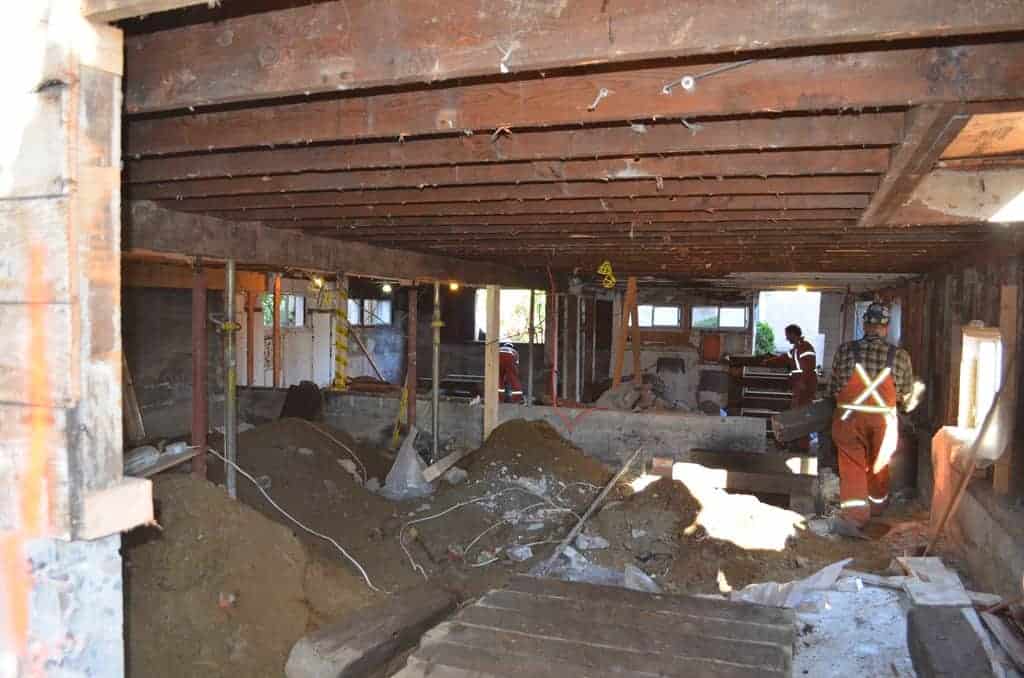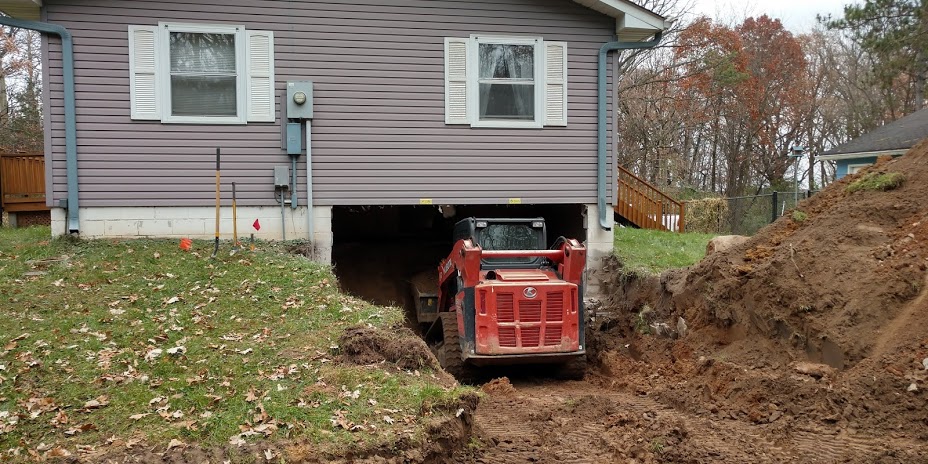Discover Quality: Toronto Basement Underpinning Services You Can Depend On
Discover Quality: Toronto Basement Underpinning Services You Can Depend On
Blog Article
Every Little Thing You Need to Find Out About Cellar Underpinning for a Stronger Home
Basement support is an essential procedure that can considerably improve the structural integrity of a home. Whether you are thinking about restoring your cellar or have seen signs of foundation issues, understanding the ins and outs of foundation is essential. From recognizing the indications that your home might benefit from underpinning to the costs involved and post-underpinning upkeep, this detailed guide will shed light on the intricacies of this building method. Keep tuned to uncover exactly how basement foundation can not just reinforce your home yet also give comfort for many years ahead.
Benefits of Cellar Foundation
Cellar underpinning supplies substantial architectural support and increased security to homes, making certain long-term safety and toughness. Among the crucial benefits of cellar foundation is the capacity to enhance the foundation of a residential property, especially in instances where the existing structure is weakened or jeopardized. By prolonging the deepness or width of the foundation, underpinning disperses the weight of the building better, minimizing the threat of settlement or structural failure gradually.
Furthermore, basement support can create additional home or enable the building and construction of a cellar in residential or commercial properties that do not currently have one. This can considerably increase the value of the home and supply more functional room for the property owners. In addition, underpinning can aid stop water infiltration and boost the general power efficiency of the property by securing off splits and gaps in the foundation.
Signs You Required Underpinning
Offered the architectural support and security benefits that cellar underpinning offers, it is critical to be knowledgeable about specific indications that may signify the demand for this fundamental fortifying method. One common indication that your home might call for base is the visibility of fractures in the wall surfaces, specifically if they are diagonal or larger than a quarter of an inch. Additionally, doors or windows that are sticking or no longer closing correctly might indicate a moving structure that needs underpinning. Sloping or unequal floorings, especially in older homes, might additionally suggest fundamental problems that base can deal with effectively. If you observe voids in between the wall surfaces and the ceiling or in between the walls and the floor, maybe a sign of structure negotiation, triggering the demand for support. Lastly, any type of noticeable indicators of wetness or water damages in the cellar can be an indication of a compromised foundation that needs underpinning to avoid additional architectural damage. Routinely examining your home for these indications can help you recognize the need for underpinning at an early stage, ensuring the architectural stability of your building.
Refine of Underpinning

To start the process of base, a complete assessment of the existing foundation's condition is performed by certified architectural designers. When the assessment is total and view underpinning is deemed essential, the underpinning process typically starts with excavating areas of the existing foundation in a strategic manner.
After the support group is in location, the next step involves progressively loading the dug deep into areas with high-strength cement to secure the brand-new foundation support in placement. Throughout the underpinning procedure, cautious surveillance and modifications are made to make certain that the structure is efficiently enhanced which the structural stability of the building is preserved. By complying with an organized strategy and adhering to sector finest practices, underpinning can efficiently reinforce the structure of a home and reduce architectural issues.
Expense Considerations
Taking into consideration the monetary effects of underpinning a cellar is essential for homeowners wanting to enhance their property's structure. The cost of base can differ substantially depending on different aspects such as the dimension of the basement, the depth of the foundation needed, the present problem of the foundation, and the specific foundation approach chosen. Generally, homeowners can expect to pay anywhere from $1,000 to $3,000 per direct foot for underpinning services. This indicates that for a regular 30-foot cellar, the complete expense can vary from $30,000 to $90,000 - Bench Footings Toronto.
It's critical for home owners to acquire multiple quotes from respectable base specialists to ensure they are getting a fair rate for the work required. Additionally, it is very important to allocate any type of unexpected circumstances or extra costs that may develop during the underpinning procedure. While the price of support may appear high, it is a required investment to guarantee the architectural stability and safety and security of the home in the long term.
Maintenance After Underpinning
Adhering to the completion of basement support, regular the original source upkeep is vital to preserve the architectural enhancements and make sure lasting security of the home. As soon as underpinning is done, house owners should carefully monitor the basement for any indicators of splits, water seepage, or shifts in the structure. Regular inspections by a qualified expert can aid capture any type of problems early on, avoiding possible expensive repair work in the future.
It is vital Going Here to preserve proper water drainage around the structure to stop water damage. Seamless gutters ought to be kept tidy, and downspouts ought to route water far from the residence. Any type of landscaping around the structure must incline away from the home to stay clear of water pooling near the cellar wall surfaces.

In addition, keeping constant humidity degrees within the basement is important to avoid moisture-related problems. Proper air flow and making use of dehumidifiers can assist manage humidity levels and shield the newly reinforced foundation.
Final Thought
Finally, basement underpinning is an advantageous procedure for reinforcing the foundation of a home. By identifying the signs that suggest the need for support and comprehending the procedure and expenses involved, house owners can guarantee the security and safety of their home - toronto basement underpinning. Appropriate upkeep after underpinning is necessary to extend the life-span of the foundation and stop future concerns
One of the essential advantages of basement foundation is the ability to reinforce the foundation of a property, particularly in situations where the existing foundation is compromised or endangered. As soon as the assessment is total and underpinning is deemed required, the underpinning process typically begins with excavating sections of the existing foundation in a calculated fashion. The cost of underpinning can vary dramatically depending on various elements such as the size of the basement, the depth of the base called for, the existing problem of the foundation, and the certain support approach selected. As soon as base is done, homeowners need to faithfully check the basement for any signs of splits, water seepage, or shifts in the foundation.In conclusion, cellar support is a beneficial process for strengthening the structure of a home.
Report this page